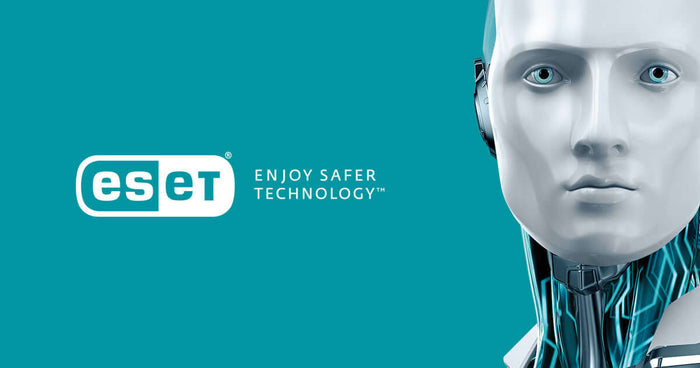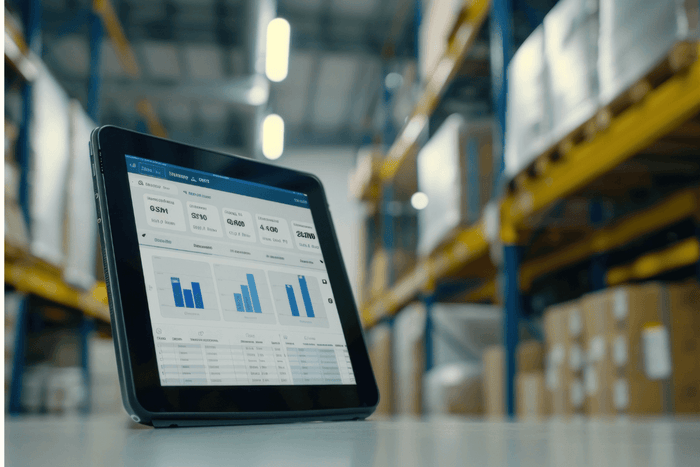Anti-Virus
Protect Your Business with Leading Anti-Virus Solutions
In today’s digital landscape, cyber threats are more frequent and sophisticated. At Premier Technology, we protect the digital assets of businesses in Cheltenham, Cotswolds, and Gloucestershire with industry-leading antivirus solutions from trusted names like ESET and Microsoft Defender, ensuring resilience against evolving cyber threats.
Why Your Business Needs Advanced Anti-Virus Protection
Our Anti-Virus Solutions
ESET’s solutions are designed to be lightweight, ensuring they protect your systems without slowing them down.
Advanced Threat Detection
Advanced Threat Detection
ESET Advanced Threat Detection (ATD) is a robust solution designed to protect against complex cyber threats such as zero-day exploits, ransomware, and advanced persistent threats (APTs). Here’s a concise overview of its key features:
1. Multi-Layered Protection: ESET combines network attack prevention, exploit blocking, and botnet protection to defend against a wide range of threats targeting networks and devices.
2. ESET LiveGrid®: A cloud-based reputation system that leverages global threat intelligence to provide real-time threat detection and faster responses to emerging malware.
3. Machine Learning & Behavioral Analysis: Detects zero-day threats using machine learning models, heuristic scanning, and real-time behavioral monitoring to block suspicious activities before they cause harm.
4. Ransomware Shield: Actively monitors processes for ransomware-like behavior, preventing the encryption of sensitive data by blocking suspicious activities.
5. Deep Behavioral Inspection (DBI): Scans processes in real time for any signs of malicious behavior, offering an extra layer of protection beyond signature-based detection.
6. Cloud Sandboxing: Executes suspicious files in a virtual environment to observe their behavior, ensuring potential malware is blocked before it can infect a system.
7. EDR (Endpoint Detection and Response): ESET’s EDR solutions like Enterprise Inspector provide visibility, advanced threat hunting, and response tools to detect and neutralize sophisticated attacks.
ESET ATD uses a layered approach combining AI, cloud intelligence, and real-time monitoring to protect businesses from sophisticated and evolving threats.
Efficient Performance
Efficient Performance
ESET Efficient Performance ensures that your business stays secure without compromising system speed or productivity. Designed to run light on resources, ESET is perfect for both high-powered and low-spec environments, ensuring smooth performance even during intensive tasks.
1. Low System Impact: ESET is optimised for minimal resource usage, ensuring that systems remain fast and responsive while providing strong protection.
2. Minimal CPU & Memory Usage: Its antivirus solutions use very little CPU and memory, ensuring that applications run smoothly without interruption.
3. Optimised Scanning: With Smart Scanning, ESET avoids re-scanning trusted files, reducing scan times and resource consumption.
4. Game and Presentation Modes: ESET’s Game Mode suppresses notifications and delays background tasks during full-screen activities, ensuring no interruptions without sacrificing security.
5. Customisable Performance Settings: Users can fine-tune ESET to balance performance and security, making it adaptable for different environments and devices.
6. Small Update Sizes: ESET uses small, incremental updates, which reduce network strain and ensure the system remains fast and responsive during updates.
7. Energy Efficiency: ESET minimises power usage during operations, ensuring longer battery life for mobile devices and laptops.
Centralised Management
Centralised Management
ESET Centralised Management empowers businesses to manage their security infrastructure from a single dashboard, ensuring seamless control over all devices and endpoints. It simplifies administration, making it easy to deploy and monitor security policies across your entire network.
1. Single Management Console: ESET offers a centralised management dashboard through ESET PROTECT, providing real-time visibility of all connected devices, from desktops to mobile endpoints.
2. Multi-Platform Support: Manage Windows, macOS, Linux, and mobile devices all in one place, ensuring consistent security across your entire network, regardless of the operating system.
3. Remote Management: ESET’s centralised console allows administrators to perform remote security tasks, such as deploying updates, managing configurations, and responding to threats, all without needing physical access to devices.
4. Automated Policies & Tasks: Set automated security policies and scheduled tasks, ensuring devices stay compliant with security protocols without manual intervention.
5. Role-Based Access Control: Assign specific permissions to different users or departments, ensuring that only authorised personnel can modify critical security settings.
6. Reporting & Alerts: ESET provides detailed reports and real-time alerts on security incidents, device status, and network performance, allowing businesses to stay proactive in addressing vulnerabilities.
7. Cloud and On-Premise Options: ESET PROTECT is available as both a cloud-based and on-premise solution, giving businesses flexibility in managing their security infrastructure based on their unique needs.
ESET Antivirus with Integrated Mobile Device Management (MDM)
ESET Antivirus with Integrated Mobile Device Management (MDM)
When you choose ESET’s antivirus solutions, you also get the option to include Mobile Device Management (MDM) as part of the package. This means that beyond just protecting your endpoints (desktops and laptops) from malware and cyber threats, you can also manage your Android and iOS devices through a single, unified platform.
• One Solution for Antivirus and MDM: ESET’s PROTECT platform enables businesses to combine advanced endpoint security with comprehensive mobile device management, all through the same console.
• Centralised Management: Manage your antivirus protection and mobile device policies (such as encryption, app control, and device tracking) from a single dashboard, simplifying IT management across all devices.
• MDM Included: When you deploy ESET antivirus, it can also enforce security policies on mobile devices, ensuring compliance, remote support, and overall security for your entire network.
With ESET, businesses can protect all their endpoints—both traditional and mobile—using a single, streamlined solution, maximising security and operational efficiency.
Microsoft Defender for Business and Microsoft Defender for Endpoint offer a suite of advanced features that go well beyond basic antivirus protection.
Centralised Security Management
Centralised Security Management
Microsoft Defender Centralised Security Management provides businesses with a unified platform to monitor and manage security across devices, users, and services. With deep integration into Microsoft’s ecosystem, it offers comprehensive control for security teams to ensure a secure and compliant environment.
1. Microsoft 365 Security Center: Microsoft Defender offers a centralised dashboard for managing security across Microsoft 365 services and endpoints, providing real-time insights into potential threats.
2. Cross-Platform Support: Manage security across Windows, macOS, Linux, Android, and iOS devices, ensuring consistent protection regardless of platform.
3. Remote Monitoring & Management: Administrators can use Microsoft Defender for Endpoint to perform remote tasks, deploy patches, adjust configurations, and respond to incidents across the network.
4. Advanced Threat Detection: Defender uses AI and machine learning to provide real-time detection and remediation of threats, with a central view of all potential security incidents across the organisation.
5. Automated Policies: Apply automated security policies that enforce compliance and security standards across all endpoints, minimising the need for manual intervention.
6. Role-Based Access Control (RBAC): RBAC ensures that security management tasks are restricted to authorised personnel, allowing for precise control over who can perform sensitive actions within the system.
7. Detailed Reporting & Alerts: Defender provides comprehensive reporting tools and real-time alerts, enabling IT teams to monitor and manage security risks proactively, with the ability to generate in-depth reports on incidents and vulnerabilities.
8. Seamless Integration with Microsoft Ecosystem: The management tools within Microsoft Defender integrate seamlessly with other Microsoft services like Azure, Microsoft 365, and Intune, making it ideal for businesses already operating within the Microsoft ecosystem.
Advanced Threat Detection and Response
Advanced Threat Detection and Response
Microsoft Defender’s Advanced Threat Detection and Response integrates AI-driven technologies and cloud intelligence to identify, investigate, and mitigate threats across your network, protecting against both known and emerging attacks.
1. AI and Machine Learning-Powered Detection: Microsoft Defender uses artificial intelligence (AI) and machine learning to analyse and detect anomalous behaviors in real-time, helping to catch advanced threats like zero-day attacks, ransomware, and fileless malware.
2. Automated Threat Remediation: Once a threat is detected, Defender automatically initiates a response by isolating compromised systems, terminating malicious processes, and restoring affected systems to a healthy state, minimising manual intervention.
3. Endpoint Detection and Response (EDR): Defender for Endpoint provides advanced visibility into endpoint activity, enabling security teams to investigate and respond to potential threats before they can cause damage. This is particularly useful for post-breach forensics and incident response.
4. Threat Intelligence Integration: Defender leverages Microsoft’s global threat intelligence from Azure, Microsoft 365, and other services, allowing it to identify new malware variants and trends across the broader threat landscape.
5. Real-Time Analytics and Alerts: Through Microsoft 365 Security Center, security teams receive real-time alerts and actionable insights on potential security incidents, along with recommended steps for remediation.
6. Cloud-Based Sandboxing: Defender’s cloud sandboxing allows suspicious files and activities to be analysed in an isolated environment, ensuring threats are identified without exposing your network to risk.
7. Threat Hunting: For advanced users, Microsoft Defender for Endpoint offers tools for proactive threat hunting, enabling security professionals to search for and mitigate advanced threats that may not have been automatically flagged.
8. Seamless Integration: Defender integrates with Azure Sentinel and other Microsoft security products, providing a unified approach to threat detection, mitigation, and response across your cloud and on-premise infrastructure.
Cross-Platform Protection
Cross-Platform Protection
Microsoft Defender offers comprehensive cross-platform protection, ensuring that businesses can secure all their devices, regardless of the operating system, with seamless integration and consistent security management across environments.
1. Multi-Platform Support: Microsoft Defender provides protection for Windows, macOS, Linux, Android, and iOS devices, allowing businesses to implement uniform security policies across mixed environments.
2. Unified Security Console: Through the Microsoft 365 Security Center, security administrators can manage and monitor all devices from a centralised dashboard, ensuring consistent visibility and control over all endpoints, no matter which platform they run.
3. Mobile Device Security: Defender protects mobile devices running iOS and Android against phishing, malware, and network-based attacks. It also integrates with Microsoft Intune for device management and policy enforcement across the mobile fleet.
4. Comprehensive Threat Detection: Regardless of platform, Microsoft Defender provides real-time threat detection, behavioural analysis, and cloud-based intelligence to ensure that all devices are protected from advanced threats, including ransomware and phishing attempts.
5. Seamless Cloud Integration: By integrating with Azure Active Directory and Azure Security, Microsoft Defender provides unified protection for both on-premise devices and cloud-based infrastructure, ensuring secure access to all platforms and services.
6. Endpoint and Server Protection: Defender extends its cross-platform protection to servers running Windows or Linux, offering the same level of advanced threat detection, vulnerability management, and attack surface reduction as it does for desktop and mobile endpoints.
7. Consistent Policies and Compliance: With Defender’s cross-platform protection, businesses can ensure that the same security and compliance policies are enforced across all devices and operating systems, simplifying management and reducing security gaps.
Automated Remediation
Automated Remediation
Microsoft Defender features automated remediation capabilities that allow businesses to quickly respond to security incidents without manual intervention, helping to maintain operational continuity and limit the impact of threats.
1. Automatic Threat Response: When Microsoft Defender detects a threat, it can automatically take action to mitigate it by isolating compromised devices, removing malicious files, and rolling back changes made by malware or ransomware.
2. Remediation Actions: Defender can execute a variety of remediation actions, including:
• Quarantining infected files.
• Terminating malicious processes.
• Blocking malicious URLs or IP addresses.
• Restoring modified or encrypted files back to their pre-attack state.
3. Reduced Manual Intervention: By automating the response to security incidents, Defender significantly reduces the workload for security teams, allowing them to focus on higher-priority tasks while ensuring threats are addressed promptly.
4. Integrated Rollback for Ransomware: In the event of a ransomware attack, Defender’s automated remediation can revert files that have been encrypted or corrupted by malicious activity, ensuring that business-critical data is restored quickly without loss.
5. Self-Healing Capabilities: Defender’s automated remediation works across all supported platforms, ensuring that once a threat is detected and neutralised, affected systems are returned to a healthy state without disrupting productivity.
6. Automated Threat Isolation: In complex attacks, Microsoft Defender can automatically isolate compromised devices from the rest of the network, preventing the spread of malware or other harmful activities until the device is fully remediated.
7. Continuous Monitoring and Action: Even after remediation, Microsoft Defender continues to monitor devices for lingering or recurring threats, ensuring ongoing protection and swift responses to any emerging issues.
Robust & Scalable
Robust & Scalable
Microsoft Defender is designed to provide robust security while scaling seamlessly with businesses of all sizes, from small operations to large enterprises. Its architecture ensures that your security infrastructure grows alongside your business, offering consistent protection and performance across all devices and environments.
1. Enterprise-Grade Security: Built to handle high-volume environments, Microsoft Defender uses AI-powered detection and cloud intelligence to ensure robust protection against evolving cyber threats, from small businesses to large global enterprises.
2. Scalable Across Devices and Endpoints: Defender scales effortlessly across tens, hundreds, or thousands of devices, offering consistent endpoint protection across Windows, macOS, Linux, and mobile devices.
3. Cloud-Native Scalability: As a cloud-based solution, Microsoft Defender can scale on demand, offering immediate capacity adjustments for businesses expanding their operations or device fleet without needing hardware upgrades or additional on-premise infrastructure.
4. Modular Deployment: Businesses can deploy Microsoft Defender features based on their specific needs, enabling a modular approach that allows for tailored protection. As your business scales, more advanced features, such as EDR (Endpoint Detection and Response) and Advanced Threat Analytics, can be added with ease.
5. Seamless Integration with Microsoft Ecosystem: Microsoft Defender integrates natively with other Microsoft services, such as Azure Active Directory, Intune, and Azure Sentinel, allowing businesses to scale their security posture while keeping management centralised.
6. Global Threat Intelligence: Defender leverages Microsoft’s vast network of global threat intelligence, ensuring that it remains robust in identifying and mitigating emerging threats, no matter how fast your organisation grows.
7. Automated Scalability for Cloud Workloads: For businesses utilising cloud infrastructure, Defender provides auto-scaling protection for cloud workloads, securing virtual machines, containers, and hybrid environments as they expand.










